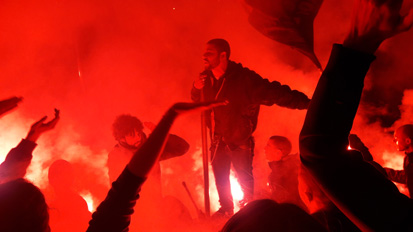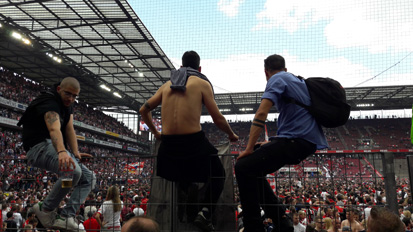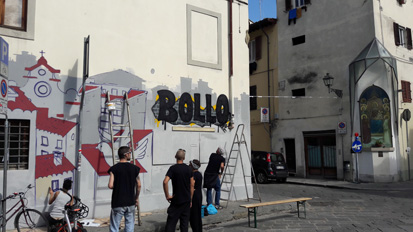FIELDWORK IN FLORENCE, ITALY.
My fieldwork explored the practices and aspirations of the supporters of Centro Storico Lebowski (CSL), a semi-professional football club based in Florence, Italy, founded and run by its supporters.
The supporters’ core is comprised of close friends who form a group of “ultras”, i.e. football fans who organize and choreograph support of their team and are engaged in constant competition (often including physical confrontation) with other ultras groups. CSL exists in part as a container in which this friendship group can continue to practice its ultras ways. Today, ultras in Italy are a self-conscious counterculture, often held in poor regard by public opinion, besieged by the police and big-business club authorities, but with its own hotly debated discursive, aesthetic and behavioural norms and registers.
In recent years, a parallel project of turning the club into a political agent in the wider local milieu has emerged, articulated as an attempt to transform social relations through the practice of football, and football support, in keeping with leftist values. This project, which among other things has seen the club open a free football school for children in the working-class district of San Frediano (see also photo 3), requires engagement and alliance with socio-political actors other than other ultras groups, and thus continuously readdresses the conception and practices of CSL as “the ultras club”. All pictures were taken “on the fly”, using my phone camera, allowing for minimal disruption of my participant-observation.
Image 1
LIGHTING FLARES DURING AN EVENING GAME. The ultras life must have style and be spectacular. Part of this spectacle is the use of flares on the stands, the torciata. The figure at the centre is an apprentice lanciacori, the orchestrator of the ultras’ songs. He stands on the front railing of the terraces, using a pole for support. To his left are the group’s drummer - right beneath him – and the senior lanciacori, who is sitting on the railing and is letting his apprentice take centre stage. While using flares is illegal, police rarely attend the club’s matches in the semi-professional 7thlevel league of Italian football, where the risk of violence is minimal as audiences are small and there are no other serious ultras groups.
Image 2 
VISITING OUR BROTHERS IN COLOGNE. Ultras groups have many enemies, but they also have friends. The Lebowski ultras have a gemellaggio, a “twinning”, with a group belonging to Cologne’s Südkurve. It is an important relationship of alliance and friendship that can only be attained, in the ultras’ own words, after plenty of cautious “sniffing each other out”. The gemellatiare then treated like brothers, following a careful etiquette of reciprocity, and joys and sorrows (both on and off the pitch) are shared. This picture shows three Lebowski ultras in the Cologne stadium, where they joined their gemellatifor the last game of the season. The locals won their first qualification to a European cup in over twenty years, and celebrated with a pitch invasion. One of the ultras is holding up a banner depicting Bollo, a Lebowski ultrà who died tragically aged 24 (see also photo 3).
Image 3
A PRESENCE ON THE WALL. The presence of Bollo, and other deceased ultras, is continuously reaffirmed in many ways, including chanting their names at the end of matches. Some of these affirmations of presence beyond death erupt into the view of the wider public, creating sometimes stark juxtapositions such as that with the other mural decoration visible on the right. At the heart of Bollo’s home-district of San Frediano, one of the last widely working-class areas in the historic centre of Florence, is Piazza Tasso. Here, the Lebowski ultras, together with many of Bollo’s other friends, re-painted a mural dedicated to him and to his role in the district, after the original was disfigured by an unknown offender. The police tried to stop the unauthorized painting, and only the mediation of one of the club’s recently acquired institutional allies – a local district councillor – ensured its completion.
